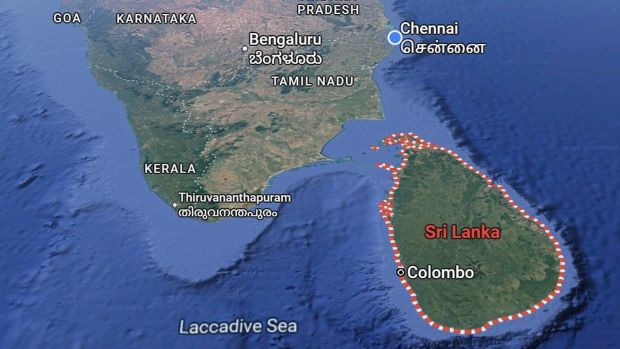How Sri Lanka protects Tamil Nadu, Andhra Pradesh from ocean fury
By V. Geetanath
HYDERABAD – Sri Lanka, located to the south of India, acts as a natural land barrier and plays a crucial role in shielding the southeastern coast of the country from the potentially destructive impacts of long-period swell waves generated in the Southern Ocean, according to scientists at the Indian National Centre for Ocean Information Services (INCOIS).
These powerful waves, capable of travelling thousands of kilometres with minimal energy loss, have frequently caused coastal flooding and erosion along the southwestern coastline, particularly in Kerala. However, the eastern coast, especially regions north of Sri Lanka such as Tamil Nadu and southern Andhra Pradesh, remains largely unaffected.
This is despite the fact that these swells also propagate into the Bay of Bengal, though they are not predominant along the southeastern coast of India. To investigate this phenomenon, researchers used real-time data from wave rider buoys deployed off Kollam on the west coast and Pondicherry on the east coast, along with high-resolution simulations using the ‘WAVEWATCH III’ model.
The results revealed that more than 96% of long-period swell events observed at Kollam failed to reach Pondicherry. But, when the Sri Lankan landmass was hypothetically removed from the model, the swells reached and impacted the previously protected eastern coast, confirming the landmass’s vital role as a swell shield.
This study has significant implications in the context of global sea level rise and climate change. Even minor alterations in coastal geography, such as land submergence due to rising seas, could shift wave propagation paths and expose new regions to marine hazards, the scientists said.
Focused experiments demonstrated that the Sri Lankan Land Mass (SLLM), situated in the southeastern part of the Indian peninsula, actively blocks long-period swell waves from the Southern Ocean from reaching India’s southeast coast.
“Our analysis shows that in the absence of the SLLM, destructive Southern Ocean swells can reach the Indian southeast coast, including areas north of Sri Lanka up to mid-Andhra Pradesh,” said INCOIS director T. M. Balakrishnan Nair.
Nair, who is also a co-author of the study, emphasized that these findings highlight the importance of recognising and incorporating natural geographic features like islands and landmasses into coastal hazard assessments and early warning systems, especially in a warming world.
Other scientists involved in the study include K.G. Sandhya, R. Harikumar, P.A. Francis, and Balaji Baduru. The Department of Marine Geology at Mangalore University and the Indian Institute of Tropical Meteorology, Pune, also contributed to the research. The research paper was published in the Journal of Earth System Science.
– thehindu.com



Comments are closed, but trackbacks and pingbacks are open.